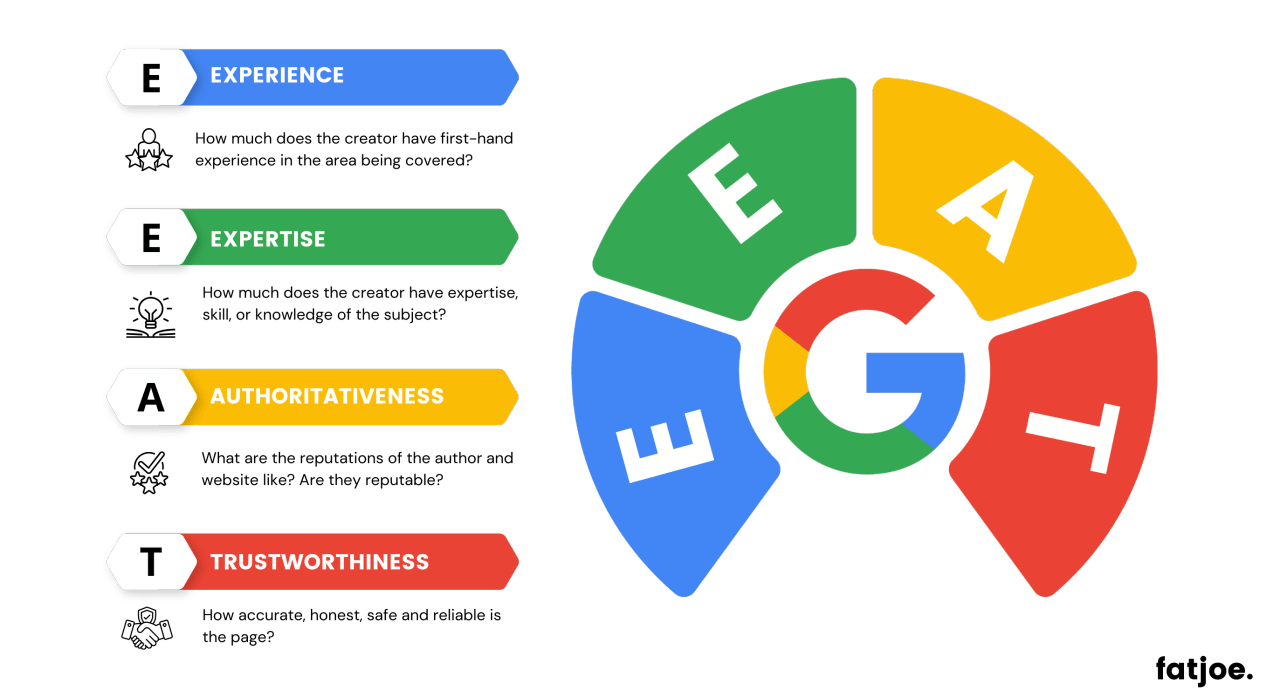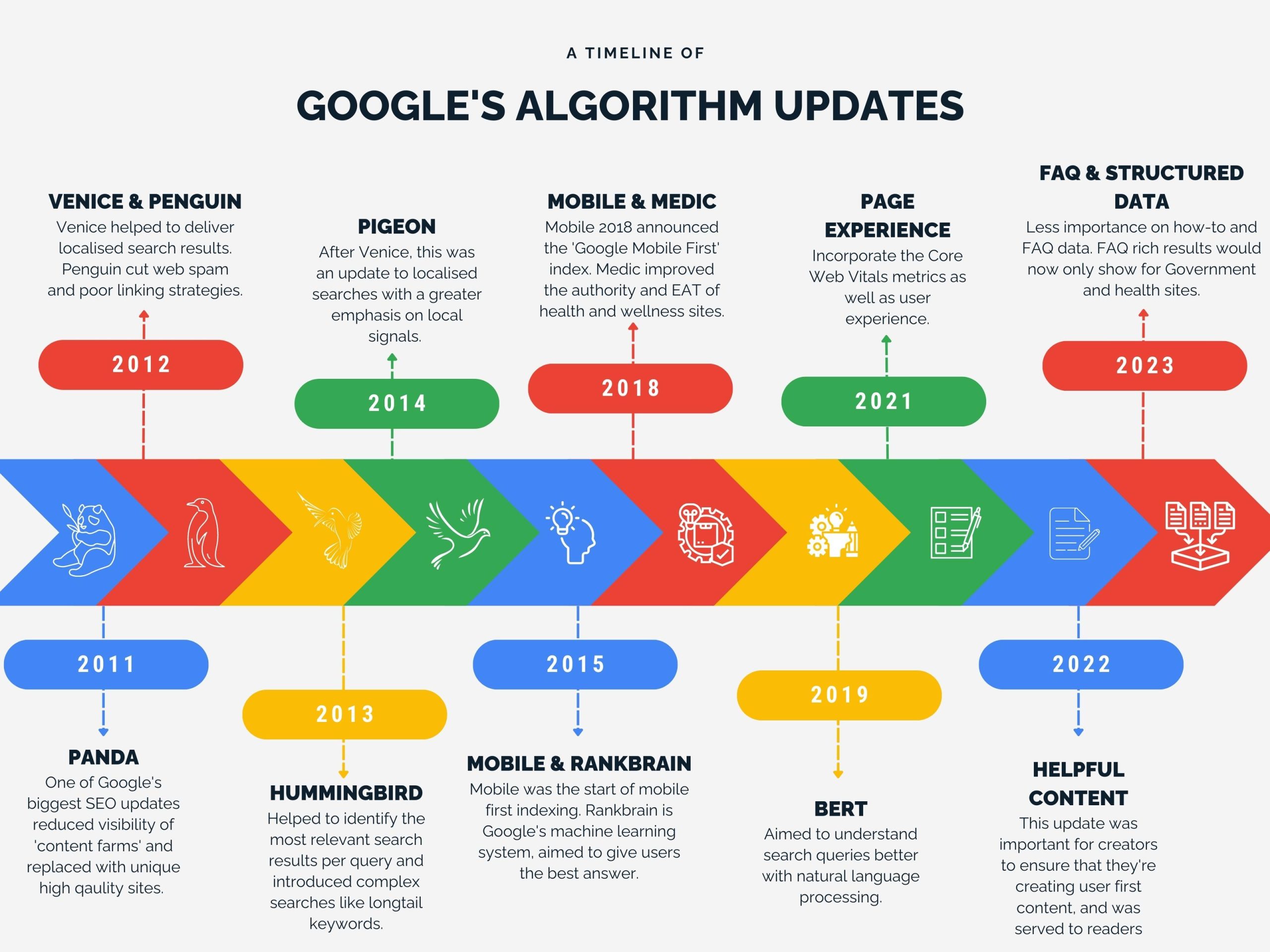
Starting and running a business can be daunting and building a strong online presence from nothing can seem almost impossible in the early days. Success requires a heady mix of technology and marketing expertise from the outset.
Here are twenty simple but very powerful tips you can implement to help your business succeed online.
They should all be very obvious. But the chances are you’re not doing them (which is a potential threat to your business). Your competitors are probably not doing them either (which is a big opportunity!)
1. First Ask Customers What They Want!
All the SEO and traffic in the world won’t drive sales unless you’re offering what customers want, at a competitive price, on a nice site that works the way they want it to.
Do your research as early as possible. This really ought to be common sense but few businesses, regardless of size, actually bother to find out what their customers really want before building brands and websites with little or no input from the target audience.

There is really no excuse for this outdated attitude in today’s connected, social world. At the very least you should find out which products your target audience wants to buy and make sure your prices are competitive. But the web means there are no limits to how deeply engaged your customers could be with your brand.
Why not let them build your brand the way they want it? Your customers are expert consultants who are willing to design your brand, your website, and your business on Facebook. For free. So at least have the decency to ask them what they want. Gaining buy-in from customers is extremely powerful: you know you’ll be launching something they like.
Involved customers are advocates too. In laymen’s terms that means you get a sales force that works for free. Most of your customers use social networks and can share your message with a single click if you give them something worth sharing.
In particular, time spent identifying and engaging with the people who influence your customers is rarely wasted. Never stop engaging. Never stop shaping your business to suit your customers.
2. Start SEO… NOW!
Search Engine Optimisation can take several months to take effect and it’s the best possible way to invest your marketing budget. So why wait? Get started right away.
Get a page live on your domain as soon as you have a domain. Any page will do: even a blank page is better than failing to get a page online ASAP. But why stop at a blank page? Why not invite free marketing by adding social media sharing buttons?
If you haven’t already started engaging your target market and its influencers, why not tease them a little… start generating a little buzz about what you’re doing.

3. Launch: A Unique Opportunity!
If you’re a new company launch is a unique and enormous opportunity that will never come back. It’s likely to be your most newsworthy moment and it might even be your only truly newsworthy moment ever.
The news of your launch could win you coverage in popular and influential blogs and offline media – with accompanying links and social media activity to kick start your SEO, social and other online marketing campaigns, as well as brand awareness.
DO NOT squander this huge opportunity. You cannot put too much effort into publicising your launch and harnessing it for SEO. If you have a launch budget then most of it should be invested in generating buzz, coverage and online activity around your brand and your website.
4. Start Blogging
As a brand, you need to let your target audience know you are there, win their trust and engage them. Blogging demonstrates your expertise and shows you are proactive.
It is also the first component of your content marketing strategy. Your blog posts will be of direct relevance and interest to your target audience. They will be shareable. If they are really compelling – and you make an effort to promote them – then they will draw links and social media activity that will boost brand awareness and SEO for free.
Unique content – tailored to your target market based on a deep analytical understanding of people within the market – is the foundation of SEO strategy.
Blogging is the easiest way to build that content foundation.

After all, how much of your product copy, images and videos are completely unique? (That’s something else you need to address).
And seriously, are your product pages, or the other pages on your site really interesting enough for people to share with friends on Facebook, or their business network on LinkedIn for B2B markets?
5. Be Social
Use Social Media. Be proactive and helpful in social media channels.
Setting up Twitter, Facebook, YouTube, Instagram, TikTok, Pinterest… all your key social media channels… it’s free. Why would you not do it?
It’s easy to put content out there using social media. At the very least you can tweet each of your exciting new blog posts and post them on Facebook.

Do your products have good, unique images? Share them on Pinterest. Do your best-selling products have videos? Probably not yet… but that’s another easy way for you to leap ahead of your competition right there.
Social media is not about broadcasting at people. It’s about engaging in dialogues. Reach out to people and have conversations. Help people. Make friends with people… It really is all about people.
6. Use PPC While SEO Builds
Let me re-iterate that in many ways good SEO is the most powerful thing you could possibly do. But SEO usually takes a few months to deliver strong results.
PPC is a powerful way to drive traffic and sales almost instantly, in a highly scalable, controllable and measurable way.
It is particularly useful in the early weeks and months – before SEO begins delivering traffic and sales organically, dramatically increasing ROI over the long term.
7. Try Google Analytics and Webmaster Tools
Google Analytics is free. So is Google Webmaster tools.
Google Analytics makes it easy to see how many people are coming to your website, where they came from and what they’re doing. All of this is essential for the success of any website.
Webmaster Tools lets you tell Google certain things about your website and in some ways look at your site from Google’s perspective. You can diagnose common problems your site may be experiencing that may harm the user experience or SEO.
Real SEO is about creating content that makes users happy when they find it – and making sure they can find it when they use search engines. Search engines like to help users find the best possible experience when they do a keyword search and these free Google tools help you understand the user experience – and Google’s view of the experience – so you can improve it. Therefore these tools are indispensable.
8. Target Those Long-Tail Keywords
Instead of chasing broad, high-volume keywords that are difficult to rank for, focus on long-tail keywords. These are more specific phrases with lower search volume but also tend to be less competitive. This means you have a better chance of ranking well for these keywords and attracting users who are further along in the buying journey.
For example, instead of targeting the keyword “running shoes,” a long-tail keyword could be “best running shoes for women with plantar fasciitis.” This keyword is more specific and tells you exactly what the user is looking for. By creating content that targets this long-tail keyword, you can attract users who are actively considering buying running shoes and are likely to convert into customers.
9. Optimise For Search Intent
Once you’ve identified your target keywords, it’s crucial to understand the search intent behind them – and this may be the hardest part of SEO.
What information are users hoping to find when they search for these keywords? Are they looking for informational content, reviews, comparisons, or something else?
By understanding search intent, you can tailor your content to meet the user’s needs. For instance, if someone searches for “best laptop for someone with poor eyesight,” they’re likely looking for in-depth reviews and comparisons of different shoe options. Focus on creating content that addresses their specific concerns and provides valuable information to help them make a purchase decision.
Additionally, localising your website to different languages can also attract traffic from diverse audiences. By tailoring your content and website experience to specific cultures and regions, you can improve your relevance for local search queries. This can also improve user engagement, and boost conversions. Moreover, localisation shows a genuine commitment to serving your target audience, fostering trust and loyalty.
10. Focus on E–E-A-T
Google prioritises content from websites that demonstrate Expertise, Experience, Authoritativeness, and Trustworthiness (E-E-A-T). Here’s how to incorporate E-A-T into your content strategy:
- Expertise: Ensure your content is written by experts in your field. If you’re not an expert yourself, consider collaborating with someone who is or citing credible sources to back up your claims.
- Experience: Google values content based on real-world experience. People trust reviews and recommendations more than what a brand says. To demonstrate Expertise, showcase customer reviews and ensure they’re genuine.
- Authoritativeness: Build your website’s authority by acquiring high-quality backlinks from relevant websites in your niche.
- Trustworthiness: Establish yourself as a trusted voice in your industry by providing accurate, unbiased information and building positive relationships with your audience.

Image source: FatJoe
11. Content Refresh & Update Existing Content
In the fast-paced world of SEO, content can become outdated quickly. New information emerges, trends shift, and user needs evolve. Regularly refreshing and updating your existing content is crucial for maintaining its relevance, attracting organic traffic, and keeping search engines happy.
Here’s how you can breathe new life into your existing content:
- Identify content gaps: Regularly audit your content to identify gaps or areas where information might be outdated or missing. Look for content with declining organic traffic or engagement metrics.
- Update information and statistics: Facts, figures, and industry trends change over time. Refresh your content by incorporating the latest data, statistics, and research findings. Ensure your sources are credible and up-to-date.
- Expand on existing content: Is there an existing blog post that could benefit from additional information or a different angle? Consider expanding on the topic with fresh insights, case studies, or new data visualisations.
- Improve readability and user experience: Take a critical look at the overall readability and user experience of your content. Can you improve the formatting, break up long text blocks with visuals, or add internal links to relevant content?
- Optimise for new keywords: As your understanding of your target audience evolves, you might identify new keywords that are relevant to your existing content. Update your content to incorporate these keywords naturally, but avoid keyword stuffing.
- Repurpose content into different formats: Can your existing content be repurposed into a different format, like an infographic, video, or podcast episode? This can be a great way to reach new audiences and give your content a fresh look.
- Re-promote updated content: Once you’ve refreshed and updated your content, don’t let it sit dormant! Share it again on social media, promote it through email marketing, or consider submitting it for republishing on relevant websites.
12. Prioritise A Mobile Experience
Gone are the days of desktop-first website design. In 2024, Google prioritises mobile-friendly websites when indexing and ranking search results. This means your website absolutely must provide a seamless user experience on smartphones and tablets.
Here’s how to ensure your website is mobile-friendly:
- Responsive design: Utilise a responsive design that automatically adjusts layout and content to fit the screen size of any device.
- Mobile-friendly navigation: Make sure your website navigation is easy to use on a touch screen. Avoid overly complex menus and opt for clear, concise labels and large tappable buttons.
- Fast loading speeds: Mobile users are impatient. Optimise your website for fast loading times on mobile devices. This includes optimising images, minimising HTTP requests, and using a reliable web host.
- Easy-to-read text: Ensure your website text is large enough to read comfortably on a mobile screen. Avoid using overly small fonts or complex layouts.
- Test on different devices: Don’t just assume your website is mobile-friendly. Test it out on various smartphones and tablets to identify and fix any usability issues.
13. Optimise Core Web Vitals For Speed & User Experience
Core Web Vitals are a set of metrics that Google uses to measure a website’s technical performance on mobile devices. These metrics include:
- Largest Contentful Paint (LCP): This measures how long it takes for the largest content element on your webpage to load. Ideally, your LCP should be under 2.5 seconds.
- First Input Delay (FID): This measures how responsive your website feels to user interaction. An FID of less than 100 milliseconds is considered good.
- Cumulative Layout Shift (CLS): This measures how much the layout of your webpage shifts as it loads. Ideally, your CLS should be very low, close to zero.
Optimising your Core Web Vitals can significantly improve your website’s user experience. Faster loading times, smooth interactions, and a stable layout all contribute to a more positive experience for visitors. Additionally, Google has hinted that strong Core Web Vitals performance can help you avoid an SEO ranking drop and potentially lead to higher search rankings
Here are some ways to optimise your Core Web Vitals:
- Optimise images: Large image files can slow down your website. Use image compression tools to reduce file size without sacrificing quality.
- Minimise render-blocking resources: Certain resources like JavaScript and CSS files can block the rendering of your website content. Minimise render-blocking resources by optimising code or using techniques like code splitting.
- Leverage browser caching: Enable browser caching to store website elements on visitors’ devices, allowing for faster loading times on subsequent visits.

14. Build Trust and Security with Secure Sockets Layer (SSL)
Security is paramount in today’s digital world. Websites that use SSL technology encrypt communication between the website and the user’s browser. This ensures that any data exchanged, such as login credentials or credit card information, remains confidential.
Here’s why using SSL is crucial for your website:
- Enhanced security: SSL encryption protects your website from data breaches and man-in-the-middle attacks.
- Improved user trust: The presence of an SSL certificate, indicated by the HTTPS padlock in the address bar, assures users that your website is secure and trustworthy. This can be especially important for e-commerce websites where users are entering sensitive information.
- Potential SEO benefit: While not a confirmed ranking factor, Google has stated that security is a consideration in their search algorithms. Having an SSL certificate might give your website a slight edge in search results.
Implementing SSL is a relatively simple process and many web hosting providers offer it as part of their service. The benefits of increased user trust and potential SEO advantages make SSL a must-have for any website in 2024.
15. Unlock Rich Snippets With Structured Data Markup
Structured data markup is a way of providing search engines with additional information about the content on your website. This data is formatted in a specific way that search engines can easily understand and interpret.
By implementing structured data markup, you increase your chances of your website appearing in rich snippets in search results. Rich snippets can include additional information like product ratings, reviews, event details, or author information. This can make your search results stand out and attract more clicks.

16. Link Building Strategies: Quality Over Quantity
While content is king, backlinks remain a powerful ranking factor in SEO. However, the focus has shifted from simply acquiring a high volume of backlinks to building high-quality backlinks from relevant websites. Here are some strategies to consider:
- Create link-worthy content: The best way to attract backlinks naturally is to create content that people want to link to. This could be informative blog posts, insightful research studies, or visually compelling infographics. Focus on content that offers value, solves problems, or fills a gap in your industry’s knowledge base. Implementing knowledge base software can help organise and optimise this content, making it easily accessible and even more valuable to your audience.
- Guest blogging: Contribute guest posts to other websites in your niche. This is a great way to reach a new audience and earn a valuable backlink to your website. Ensure the websites you target are relevant to your industry and have a good reputation.
- Broken link building: Find broken links on websites in your niche and reach out to the website owner with a suggestion to replace the broken link with a link to your relevant content. This is a win-win situation, as you help them fix a broken link and potentially earn a backlink.
- HARO (Help a Reporter Out): HARO is a platform that connects journalists with sources. Sign up as a source and respond to relevant queries from journalists. If your expertise is featured in an article, you may earn a valuable backlink.
- Online reputation management: Encourage positive online reviews and brand mentions. Positive brand mentions can indirectly influence search rankings, and some review platforms may link back to your website.
17. Analytics & Tracking: Measure Your Success
SEO is an ongoing process, and it’s crucial to track your progress and measure the effectiveness of your efforts. Here’s how website analytics tools like Google Analytics can help:
- Track organic traffic: Monitor your organic traffic over time to see how your SEO efforts are impacting website visits from search engines.
- Analyse keyword rankings: Track your ranking for your target keywords to see if your SEO strategy is moving the needle.
- Identify top-performing content: See which pages on your website are attracting the most organic traffic and user engagement. This can help you identify what kind of content resonates with your audience and inform your content strategy.
- Monitor user behaviour: Analyse how users interact with your website. See which pages they land on, how long they stay, and where they click. This information can help you identify areas for improvement and optimise your website for better user experience and conversions.
By regularly monitoring your website analytics, you can gain valuable insights into your audience and the effectiveness of your SEO strategy. Use this data to make informed decisions and continuously refine your approach to achieve optimal search engine results.
18. Be Aware Of & Embrace Algorithm Updates
The world of SEO is constantly evolving, and search engine algorithms are regularly updated. Staying informed about the latest algorithm changes is crucial to maintaining your website’s visibility in search results. Here are some tips:
- Follow industry blogs and news sources: Subscribe to reputable SEO blogs and news sources to stay updated on the latest algorithm changes and industry trends.
- Google Search Central: Google Search Central is a valuable resource from Google itself, offering insights and updates on search algorithms and best practices.
- Stay experimentative: The SEO landscape is constantly shifting. Don’t be afraid to experiment with different strategies and track your results to see what works best for your website.
By staying informed and adapting to changes, you can ensure your SEO strategy remains effective and your website continues to rank well in search results.

Image source: PHA Group
19. Master Local SEO For Your Brick-And-Mortar Business
In today’s digital age, if you have a local business, neglecting local SEO is like having a storefront with no signage. Local SEO helps ensure your business appears in search results for relevant local searches. This can significantly increase your visibility to potential customers in your area who are actively searching for the products or services you offer.
To get started, claiming and optimising your Google My Business listing is crucial. This free tool from Google lets you manage how your business appears in Search and Maps. Fill out all your details accurately, encourage customer reviews, and keep your profile updated.
Next, target local keywords. Instead of just “plumber,” think “emergency plumber in [City name].” Research relevant local terms with good search volume. Don’t forget to localise your website content too! Subtly weave your city and surrounding areas throughout your website, from your homepage to service pages and blog posts.
Building local citations is another SEO booster. Get your business name, address, and phone number (NAP) consistently listed across local directories, relevant websites, and social media profiles.
Finally, become a local hero! Sponsoring events, partnering with other businesses, and getting involved in your community can indirectly benefit your local SEO and build trust with potential customers.
20. Find A Good SEO Agency.
Doing all these things really effectively requires specialist expertise – the sort of expertise you find within a good SEO agency.
If you have the budget then you should hire a good SEO agency.
You might consider hiring an in-house SEO as an alternative – but a good agency will deliver senior-level strategic thinking without paying out a huge salary for an SEO Director.
A really good digital agency with a specialist SEO team will also deliver proper integration and coordination between other digital and offline campaigns.
It would be extremely difficult to hire all those skills at senior level in-house – let alone integrate them across all your marketing channels.
Here are some simple tips on how to identify a good SEO agency.
Conclusion
The world of SEO is constantly evolving, but the core principles remain focused on providing valuable content and a positive user experience. By following the SEO tips outlined in this article and staying up-to-date on the latest trends, you can equip your website to thrive in search results and achieve long-term SEO success.
Remember, SEO is a marathon, not a sprint. Be patient, persistent, and data-driven in your approach, and you’ll see your website climb the search engine rankings and attract a steady stream of qualified traffic. Now get out there and start optimising!



